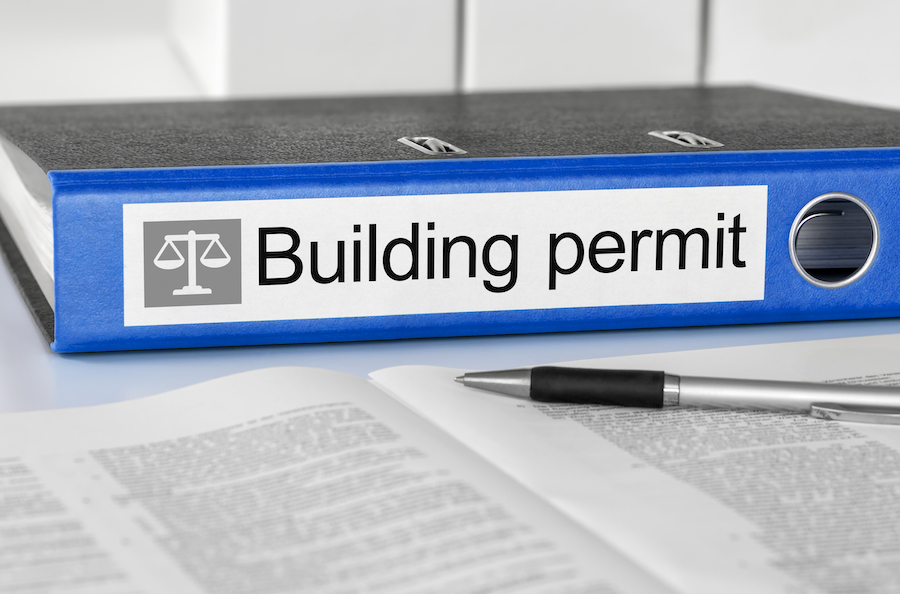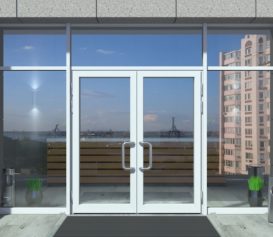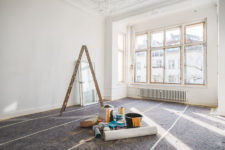Starting March 4, 2021, the DOB will deny permits to multiple dwellings with “excessive violations.” Additionally, as of March 1, 2021, the DOB will deny New Building and Alteration-CO permits for any building where more than $25,000 in covered arrears is owed to the city.
While Local Law 104 of 2019 and Local Law 160 of 2017 have been circling for a few years, the DOB (in conjunction with HPD) has finally laid out details for enforcing these particular regulations.
Here are the most important things you need to know:
What are these Local Laws?
Per the text of the law, Local Law 104 was created to deny “building permits where a residential building has an excessive number of violations.”
It went into effect 210 days after it became law (January 4th, 2020 – this date will come into play later), but is finally getting enforcement clarification as of March 3, 2021.
Local Law 160 of 2017 is concerned with specific types of permits – New Building, Alteration-CO (demolition, place of assembly or major alteration that will change the use, egress or occupancy for a property).
These types of permits will be denied for buildings where $25,000 or more in covered arrears is owed to NYC “with respect to the property for which the permit is being sought, or the owners of the property together owe $25,000 or more in covered arrears to the City.” That means if there are more than $25,000 worth of unpaid fines, civil penalties, or judgments levied at a specific property OR owed by the owners in totality, the above types of permits will be denied in DOB NOW.
Which buildings do the laws apply to?
Generally, Local Law 104 (violation count) applies to buildings classified as multiple dwellings only.
More specifically, and according to the city’s press release:
DOB will create and maintain a list of multiple dwellings in New York City with excessive, open, and hazardous DOB and Housing Preservation and Development (HPD) violations in relation to the number of residential units. The list will be updated daily. Buildings placed on this list will be prevented from obtaining new permits until the violations are resolved and the conditions are corrected, except in situations where permits are necessary to correct a violation or other select circumstances.
Important to note – embedded in the law (but not the service notice) is a line referencing condos and co-ops: “Such denial shall not apply where a dwelling unit within such multiple dwelling is owned as a condominium or held by a shareholder of a cooperative corporation under a proprietary lease.”
Additionally, a list (or the location of a list) hasn’t been made publicly available yet. That said, DOB will keep track of any flagged properties directly in BIS.
When it comes to Local Law 160, there’s no distinction for residential or commercial – this law applies to all NYC buildings. The next few sections apply to Local Law 104 only, so you can skip towards the bottom if you’re only concerned about Local Law 160.
How many violations is considered excessive?
Per the DOB, buildings will be included on the list based on violations per unit in two categories:
- Buildings with 35 or more dwelling units – 2 or more violations per unit
- Buildings with less than 35 dwelling units – 3 or more violations per unit.
Based on the information provided, the DOB is counting both DOB and HPD violations in their “violations per unit” total.
Read on for more details on which violations count against this ratio, and how you can check your open violation totals in SiteCompli & InCheck.
What kinds of violations are counted?
Overall, only violations issued on or after January 4, 2020 (the law’s effective date) will apply towards the permit restriction.
Here’s the kinds of violations they’ll be using to create the list:
HPD – Class B & C Violations
Class B & C violations that have not been cleared (open hazardous or imminently hazardous violations) will count towards the violations per unit total.
You can view these violations (pre-filtered by status, date through March 2021, and class) here in your SiteCompli or InCheck account.
DOB – Class 1 and 2 OATH (ECB)-Related Infractions
Class 1 and 2 violations issued by the DOB through OATH (ECB) that “have not been certified as corrected” will count towards the violations per unit total.
You can view these violations (pre-filtered by status, date through March 2021, and class) here in your SiteCompli or InCheck account.
How can I tell if my permits are denied?
It looks like denial will be shown directly in DOB’s BIS platform. Per the DOB, buildings on the list will be “flagged in the Property Profile…as LL 104/19 Permit Restriction. The flag will change to N/A when the building’s ratio of open violations to dwelling units falls below [the appropriate violation per unit count].”
That said, this flag will not apply to permit renewals.
Are there any exceptions for Local Law 104?
Request for exceptions will be added as a required item to any job filing in BIS on a flagged property.
From there, you’ll have to submit a Local Law 104 of 2019 Request for Exception to Permit Restriction form, shown here. The form must be signed by the applicant and the owner, stating that one or more of the below exceptions applies:
- The permit is for a dwelling unit that is owned as a condominium or held by a shareholder of a cooperative corporation under a proprietary lease.
- The issuance of the permit is necessary to correct an outstanding violation of the Construction Code, the Housing Maintenance Code or any other applicable provisions of law or rule.
- The issuance of the permit is necessary to perform work to protect public health and safety. (Documentation, including dated color photographs must be submitted)
- The permit is for a portion of the property occupied by a tenant who is not an owner of the property or responsible for any existing violations on the property.
- The property was the subject of an in rem foreclosure judgment in favor of the City and was transferred by the City to a third party pursuant to Section 11-412.1 of the Administrative Code. (Documentation must be submitted)
- The property is the subject of a court order appointing an administrator pursuant to article 7-a of the Real Property Actions and Proceedings Law in a case brought by the Department of Housing Preservation and Development (HPD). (HPD documentation must be submitted)
- The property is the subject of a loan provided by or through HPD or the NYC Housing Development Corporation (HDC) for the purpose of rehabilitation that has closed within the preceding five years. (HPD or HDC documentation must be submitted)
- The permit is required in connection with the implementation of an HPD or HDC program. (HPD or HDC documentation must be submitted)
Where can I go for help?
If the number of units used to determine your building’s violation ratio is incorrect, you can contact HPD for help.
Email codevios@hpd.nyc.gov and include the address, borough, block and lot of your building and a scan of the Certificate of Occupancy, if available
We’ll track any changes to this regulation and make updates to this post as necessary. Of course, if you have questions, don’t hesitate to reach out to our team at support@sitecompli.com
How will Local Law 160 work?
To recap, Local Law 160 looks at the amount of arrears owed instead of open violation per unit counts. The $25,000 threshold can be met by open OATH or other court judgments, civil penalties, unpaid fines, and unpaid fines and past due fees/charges assessed by the DOB.
Owners will have to answer two questions as part of the Owner’s Attestation on PW1 applications:
- Are $25,000 or more in covered arrears, that are not currently in the appeals process, owed to the City with respect to the property for which the building is being sought? [SiteCompli note: building specific fines and fees]
- Do the owners of the property owe, in aggregate, $25,000 or more in covered arrears to the city? [SiteCompli note: possibly portfolio and/or named respondent-wide in relation to the owner]
Owners who answer “Yes” to either of those questions (DOB specifically says “one or both”) will not be allowed to request New Building or Alteration-CO permits in DOB NOW. That said, owners can certify in the case of any exceptions, listed out here in the law.
We’ll let you know when there are more details here, including an updated Service Notice, or any details on if/how this information will be audited or confirmed by the city.
We’ll track any changes to these regulations and make updates to this post as necessary. Of course, if you have questions, don’t hesitate to reach out to our team at support@sitecompli.com




